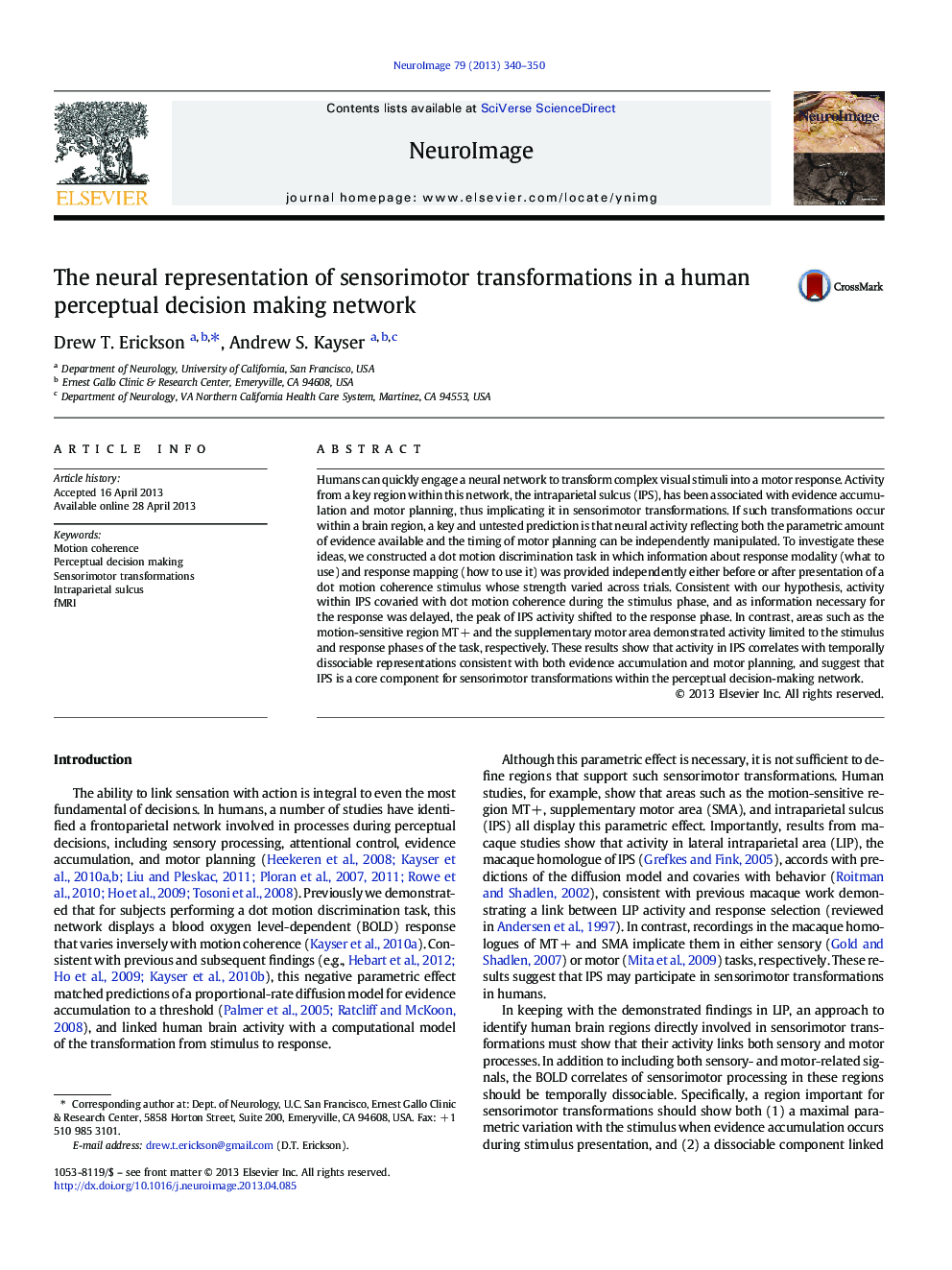| Article ID | Journal | Published Year | Pages | File Type |
|---|---|---|---|---|
| 3071987 | NeuroImage | 2013 | 11 Pages |
•A perceptual task independently manipulates sensory evidence and motor planning.•Parametric sensory effect and motor planning activity coexist in decision network.•Unique to IPS, activities are temporally dissociated when response is delayed.•These results suggest that IPS is a core region for sensorimotor transformations.
Humans can quickly engage a neural network to transform complex visual stimuli into a motor response. Activity from a key region within this network, the intraparietal sulcus (IPS), has been associated with evidence accumulation and motor planning, thus implicating it in sensorimotor transformations. If such transformations occur within a brain region, a key and untested prediction is that neural activity reflecting both the parametric amount of evidence available and the timing of motor planning can be independently manipulated. To investigate these ideas, we constructed a dot motion discrimination task in which information about response modality (what to use) and response mapping (how to use it) was provided independently either before or after presentation of a dot motion coherence stimulus whose strength varied across trials. Consistent with our hypothesis, activity within IPS covaried with dot motion coherence during the stimulus phase, and as information necessary for the response was delayed, the peak of IPS activity shifted to the response phase. In contrast, areas such as the motion-sensitive region MT + and the supplementary motor area demonstrated activity limited to the stimulus and response phases of the task, respectively. These results show that activity in IPS correlates with temporally dissociable representations consistent with both evidence accumulation and motor planning, and suggest that IPS is a core component for sensorimotor transformations within the perceptual decision-making network.
